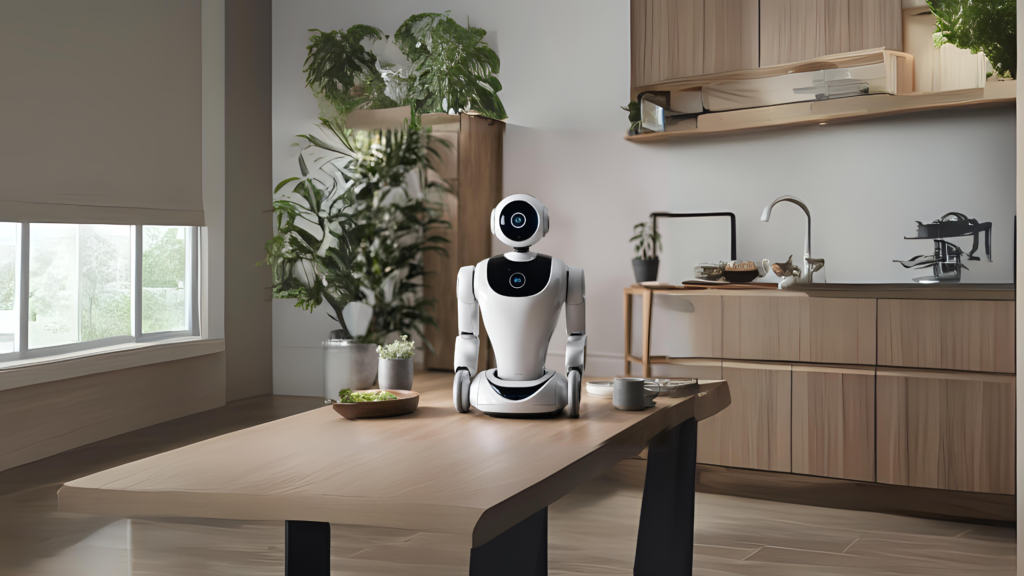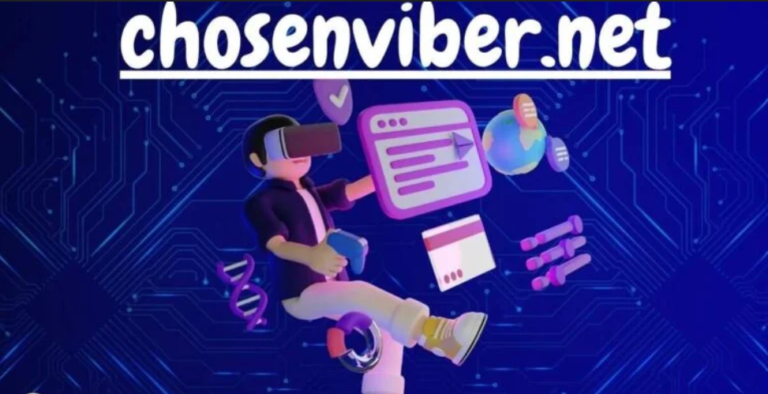Why Home Robots Are Still Not Meeting Our Expectations?
iWhen “The Jetsons” first aired on September 23, 1962, it painted a picture of a future where robots would seamlessly integrate into daily life. Rosey the Robot, the housekeeper of the Jetsons’ household, embodied the ideal of a perfect domestic helper. Fast forward to 2024, and while home robots are far from nonexistent, they fall short of the futuristic dreams we once had.
The Reality of Home Robots in 2024
Today, we do have robots in our homes, though their capabilities and prevalence might not match our expectations. iRobot’s Roomba, for instance, has sold over 50 million units, reflecting a significant adoption rate. However, other types of home robots, like lawnmowers and pool cleaners, have not achieved the same level of success. Despite the progress, many home robots still fail to deliver the all-encompassing solutions we envisioned.
The Evolution of Home Robots

Pioneering Concepts and Early Experiments
- Interactive Toys and Gadgets: Early robotics experiments often involved creating interactive toys designed to showcase the potential of robotic technology in a playful context.
- Military and Research Applications: Robotics research initially focused on military applications and specialized research tools, reflecting a practical approach to solving complex problems.
- Exploratory Innovations: Many early robots were experimental prototypes aimed at understanding fundamental principles rather than delivering practical solutions for everyday use.
Challenges and Limitations of Early Robotics
- Lack of Practicality: Many early robotic devices were innovative but lacked practical utility for everyday tasks, making them more of a technological curiosity than a functional tool.
- Technical Constraints: Early robots faced significant limitations in terms of technology, including primitive sensors and limited processing power, which hindered their functionality and reliability.
- High Costs and Complexity: The development of early robots was often prohibitively expensive and complex, limiting their accessibility and widespread adoption.
Breakthrough Innovation Through Focused Design
- Single Task Mastery: The Roomba’s success lies in its focused design, specializing in a single task—floor cleaning—which allowed it to perform exceptionally well and address a specific consumer need.
- User-Friendly Functionality: Its straightforward functionality made it accessible and easy to use, setting a new standard for consumer-friendly home robots.
- Innovative Features: Over time, iRobot integrated advanced features like AI for better navigation, smart home connectivity, and adaptive cleaning patterns, enhancing the Roomba’s effectiveness and user experience.
Challenges in Expanding Beyond Floor Cleaning
- Limited Success with New Products: Despite attempts to diversify into other home maintenance areas, such as gutter cleaning and pool maintenance, these products have not achieved the same level of success as the Roomba.
- Complexity and Reliability Issues: New product categories introduced by iRobot often faced challenges related to complexity and reliability, which undermined their market impact.
- Market Saturation and Competition: The expansion into other areas encountered stiff competition and market saturation, making it difficult for iRobot to replicate the Roomba’s groundbreaking success.
What are some challenges of domestic robots?

High Initial Development Costs
- Expensive Components and Materials: The advanced technology required for home robots, such as high-resolution sensors and sophisticated processors, significantly increases production costs.
- Research and Development Investments: Extensive R&D is necessary to innovate and refine home robots, adding to the overall expense before the robots even reach consumers.
- Manufacturing Complexity: Assembling robots with multiple complex functions involves intricate engineering processes, which further drives up costs.
Limited Market Reach Due to High Prices
- Affordability Issues for Average Consumers: The high price tag restricts home robots to higher-income households, excluding the broader consumer base.
- Market Segmentation: High costs result in a niche market, where only those who can afford luxury technology are able to purchase these advanced robots.
- Potential for Slower Adoption: The elevated price point limits the widespread adoption and acceptance of home robots, hindering their integration into more households.
Limited Task Versatility
- Specialized Functionality: Many home robots are designed for single tasks, such as vacuuming or lawn mowing, and struggle to perform other household chores effectively.
- Inadequate Multi-Tasking: Robots that attempt to handle multiple functions often fall short in performance, lacking the efficiency needed for each individual task.
- Difficulty Adapting to Varied Environments: Home robots may perform well in controlled settings but fail to adapt to the diverse and dynamic conditions found in typical households.
Efficiency and Reliability Issues
- Inconsistent Performance: Even when a robot excels in one task, its performance can be inconsistent, leading to reliability issues and consumer frustration.
- Maintenance and Repair Challenges: Functionality problems often require frequent maintenance or repairs, which can be inconvenient and costly for users.
- Limited Learning and Adaptation: Many robots have limited ability to learn from their environment or adapt to new tasks, reducing their overall effectiveness in a home setting.
Increased Risk of Mechanical Failures
- Complicated Components: The integration of multiple functions requires a complex array of mechanical parts, increasing the likelihood of mechanical failures.
- Wear and Tear: With more moving parts and intricate mechanisms, robots experience higher rates of wear and tear, leading to frequent breakdowns.
- Maintenance Challenges: The complexity of these systems often means more frequent maintenance is required, which can be costly and inconvenient for users.
Software Glitches and System Failures
- Integration Issues: Combining various functionalities into one robot can lead to software integration problems, causing glitches or malfunctions.
- Bug-Prone Systems: More complex software systems are prone to bugs and errors, which can disrupt the robot’s performance and reliability.
- Difficulty in Troubleshooting: Identifying and fixing software issues in a multi-functional robot can be challenging, often requiring professional assistance and impacting overall usability.
Current Innovations and Developments

Foundation for Advanced Robotics
- Proof of Concept: Simple machines like the Roomba demonstrated the feasibility of robotic technology for home use, proving that even basic robots could perform useful tasks effectively.
- Technological Insights: Early, simpler robots provided critical insights into navigation, sensor integration, and user interface design, which are essential for developing more complex systems.
- Cost-Effective Development: By focusing on a limited set of functions, simpler robots helped reduce development costs and allowed for iterative improvements, setting a precedent for future innovations.
Pathway to Complexity and Innovation
- Iterative Improvement: Simple machines served as a testing ground for new technologies and design approaches, allowing developers to refine and enhance functionalities over time.
- Scalability and Adaptation: Lessons learned from simple machines have informed the design of more advanced robots, helping to scale up features and adapt them for a broader range of applications.
- User Feedback and Evolution: The feedback from users of simpler robots has been instrumental in shaping the development of more sophisticated robots, guiding the addition of features and improvements based on real-world needs.
Advancements in Technology and Integration
- Enhanced AI and Sensor Technology: Future home robots will leverage advanced AI and high-resolution sensors for better learning, contextual awareness, and more precise navigation, enabling them to handle complex tasks and interact seamlessly with smart home systems.
- Increased Versatility and Functionality: Upcoming robots will be designed to perform a wider range of household chores and adapt to diverse user needs, becoming more versatile and integrated into daily home management while becoming more affordable over time.
What is the biggest problem with robots?

Past Failures: Anki, Kuri, and Jino
- High Prices and Limited Functionality: Anki, Kuri, and Jino faced challenges with their high price points and limited capabilities, which made them less appealing and accessible to the average consumer.
- Reliability Issues: These robots often struggled with reliability, leading to frequent malfunctions and maintenance problems that ultimately contributed to their market failures.
Amazon’s Astro: A Cautionary Tale
- High Expectations vs. Reality: Despite Amazon’s significant resources, Astro’s high expectations were not met due to practical challenges in its design and functionality, highlighting the difficulties of succeeding in the home robotics market.
- Resource Allocation and Market Fit: Astro’s failure underscores the challenge of aligning advanced technology with consumer needs and market readiness, even for well-funded projects from major companies.
The Importance of Foundational Work
- Building on Early Innovations: Foundational technologies and earlier robot models provide essential insights and advancements that future robots can build upon, establishing a groundwork for more sophisticated systems.
- Continuous Improvement: Ongoing improvements in technology and design, informed by past successes and failures, are critical for developing more advanced and capable home robots.
Current Examples of Progress
- Hello Robot and Matic’s Advances: Innovations like Hello Robot’s simplified design and Matic’s enhanced vacuum technology demonstrate incremental progress and refinement in home robotics, moving closer to meeting consumer needs.
- Evolving Capabilities: These current examples reflect the gradual evolution of home robots, showcasing efforts to enhance functionality and reliability while paving the way for future advancements.
Conclusion
The journey of home robots has been marked by both significant achievements and notable setbacks. While robots like the Roomba have succeeded by focusing on specific tasks, many other robots still struggle with issues related to price, functionality, and complexity.The future of home robots holds promise, with ongoing advancements laying the groundwork for more capable and affordable solutions. While it may still be a while before we see robots that can fully meet our expectations, continued progress and innovation will eventually bring us closer to that vision.
Frequently Asked Questions
Why are home robots still so expensive?
Home robots are costly due to the high cost of research and development, advanced technology, and the complexities involved in creating reliable, multi-functional devices.
What are the most common failures in home robots?
Common failures include limited functionality, high maintenance needs, mechanical and software malfunctions, and high price points relative to their performance.
Will we see significant improvements in home robots soon?
Yes, advancements in technology and ongoing research are likely to lead to more capable and affordable home robots in the near future.
How do current home robots compare to those in the past?
Current home robots are more advanced in terms of technology and capabilities compared to earlier models, but they still face challenges related to cost and functionality.
What role do foundational technologies play in developing new robots?
Foundational technologies provide the base upon which new innovations are built, enabling more advanced and capable robots to be developed over time.







